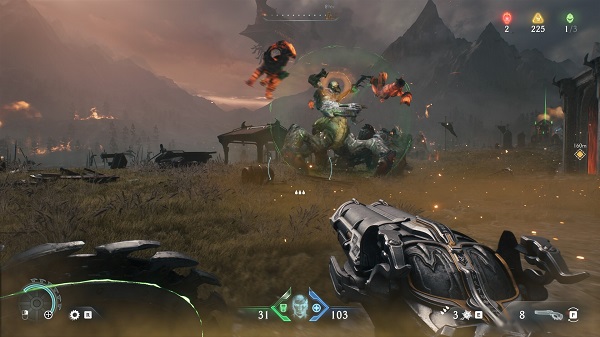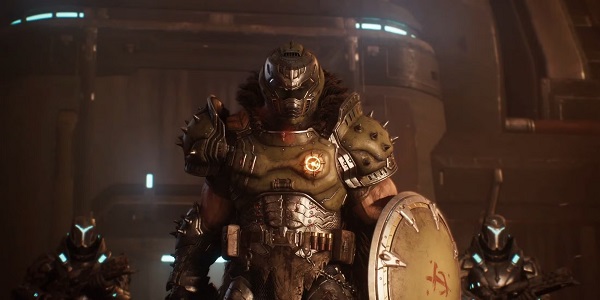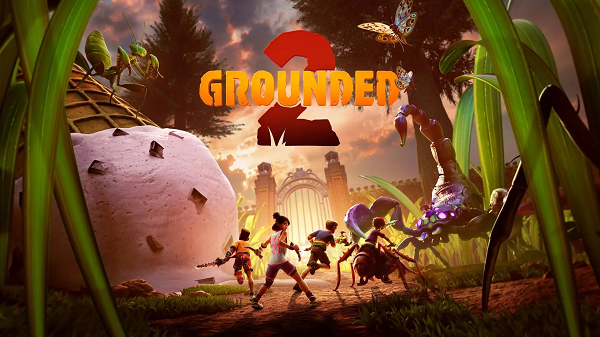Advertisement
Popular Now
The gaming landscape has evolved dramatically since the inception of the DOOM franchise, yet few titles have left as significant a mark as DOOM: The Dark Ages. Released in the late 1990s, this installment sought to blend classic DOOM gameplay with a medieval twist. Despite its ambitious premise, the game faced numerous issues that impacted its reception and longevity. This article will explore the specific problems associated with the game's level design, enemy AI, and narrative coherence, ultimately shedding light on why DOOM: The Dark Ages remains a polarizing entry in the series.
 DOOM: The Dark Ages attempted to transport players from the futuristic horrors of previous games to a dark, medieval world filled with knights, sorcery, and demons. This ambitious setting aimed to create a unique experience that would differentiate it from its predecessors.
DOOM: The Dark Ages attempted to transport players from the futuristic horrors of previous games to a dark, medieval world filled with knights, sorcery, and demons. This ambitious setting aimed to create a unique experience that would differentiate it from its predecessors.
 The combat system in DOOM: The Dark Ages aimed to build on the franchise's legacy, but it faced significant hurdles due to AI design and mechanics.
The combat system in DOOM: The Dark Ages aimed to build on the franchise's legacy, but it faced significant hurdles due to AI design and mechanics.
 While DOOM: The Dark Ages included a multiplayer mode, it was met with mixed reviews.
While DOOM: The Dark Ages included a multiplayer mode, it was met with mixed reviews.
The Ambitious Premise of a Medieval DOOM
 DOOM: The Dark Ages attempted to transport players from the futuristic horrors of previous games to a dark, medieval world filled with knights, sorcery, and demons. This ambitious setting aimed to create a unique experience that would differentiate it from its predecessors.
DOOM: The Dark Ages attempted to transport players from the futuristic horrors of previous games to a dark, medieval world filled with knights, sorcery, and demons. This ambitious setting aimed to create a unique experience that would differentiate it from its predecessors.
The Setting and Atmosphere
The game’s world is characterized by grim landscapes, crumbling castles, and eerie forests. The developers aimed to create a haunting atmosphere, reminiscent of both dark fantasy and horror genres.- Visual Design: The graphical style sought to evoke a sense of dread, utilizing dark color palettes and intricate textures.
- Sound Design: The soundtrack incorporated medieval instruments combined with ambient sounds to enhance immersion.
Narrative Challenges
While the game introduced a narrative rooted in medieval lore, it struggled to present a coherent story.- Lack of Depth: Characters felt underdeveloped, and the plot lacked engaging twists.
- Disjointed Progression: Players often found themselves confused about objectives, detracting from the overall experience.
Level Design Issues
One of the most significant criticisms of DOOM: The Dark Ages lies in its level design. Effective level design is crucial in maintaining player engagement, but this game faltered in several key areas.Linear Progression
Many levels in The Dark Ages featured linear paths that limited exploration and discovery.- Repetitive Layouts: Players often encountered similar room designs and enemy placements, leading to a monotonous experience.
- Lack of Secrets: The iconic hidden areas of previous DOOM games were sparse, reducing the incentive to explore.
Cluttered Environments
While attempting to create intricate levels, the game often resulted in cluttered environments.- Visual Overload: Excessive details made it difficult for players to navigate effectively.
- Obscured Objectives: Players frequently struggled to locate key items or pathways, leading to unnecessary downtime.
Enemy AI and Combat Mechanics
 The combat system in DOOM: The Dark Ages aimed to build on the franchise's legacy, but it faced significant hurdles due to AI design and mechanics.
The combat system in DOOM: The Dark Ages aimed to build on the franchise's legacy, but it faced significant hurdles due to AI design and mechanics.
Inconsistent AI Behavior
Enemy AI in DOOM: The Dark Ages was inconsistent, often leading to frustration during combat encounters.- Predictable Patterns: Many enemies followed easily recognizable attack patterns, reducing the challenge.
- Unresponsive Behaviors: Occasionally, enemies would become unresponsive or fail to engage, disrupting the flow of combat.
Combat Mechanics and Weapons
The game introduced new weapons and mechanics, but not all were well-received.- Weapon Balancing: Some weapons felt overpowered, while others were nearly useless, disrupting gameplay balance.
- Limited Variety: Players craved a wider array of combat options, which the game failed to deliver.
The Soundtrack and Audio Experience
Music and sound play crucial roles in shaping the gaming experience. In DOOM: The Dark Ages, the audio design was both praised and criticized.Strengths of the Soundtrack
The soundtrack, composed of haunting melodies and atmospheric tones, contributed to the game’s dark ambiance.- Immersive Soundscapes: The use of ambient sounds created tension and enhanced the horror elements.
- Memorable Themes: Certain tracks stood out, leaving a lasting impression on players.
Audio Design Flaws
In contrast to its strengths, the audio design faced criticism for several reasons.- Inconsistent Volume Levels: Players reported issues with sound balancing, where music drowned out critical sound effects.
- Repetitive Sound Cues: Over time, the audio cues became repetitive, leading to desensitization.
Multiplayer Experience
 While DOOM: The Dark Ages included a multiplayer mode, it was met with mixed reviews.
While DOOM: The Dark Ages included a multiplayer mode, it was met with mixed reviews.
Features and Gameplay
The multiplayer offered traditional deathmatch modes, allowing players to compete against one another in the game’s medieval landscapes.- Classic Elements: It retained elements familiar to long-time fans, such as power-ups and weapon pickups.
- Team Play: Some modes encouraged teamwork, which was a welcome addition.
Connectivity and Stability Issues
Many players experienced connectivity problems that hindered their ability to enjoy multiplayer matches.- Lag and Latency: High ping times led to frustrating gameplay experiences, particularly in fast-paced matches.
- Matchmaking Flaws: Inconsistent matchmaking often resulted in unbalanced matches, impacting enjoyment.
Community Reception and Legacy
Upon release, DOOM: The Dark Ages elicited a polarized response from the gaming community.Critical Reception
Critics acknowledged the game’s ambitious design but were quick to point out its shortcomings.- Mixed Reviews: Many reviews highlighted the intriguing premise but criticized the execution.
- Comparisons to Predecessors: Players frequently compared it unfavorably to earlier DOOM titles, leading to disappointment.
Lasting Impact
Despite its issues, DOOM: The Dark Ages has left a lasting impact on the franchise.- Cult Following: Over time, a dedicated fanbase formed around the game, appreciating its unique blend of elements.
- Influence on Future Titles: Some aspects of its design would inspire future iterations, albeit in refined forms.
Lessons Learned from DOOM: The Dark Ages
The challenges faced by DOOM: The Dark Ages offer valuable lessons for game developers.Importance of Cohesion
One of the most critical lessons is the necessity of cohesion between gameplay mechanics, narrative, and design.- Unified Experience: Ensuring that all elements work together can enhance player immersion and satisfaction.
- Feedback Loops: Developers should prioritize player feedback during the design process to address potential pitfalls early.
Balancing Innovation with Tradition
While innovation is essential, maintaining core elements that players love is equally important.- Respecting Legacy: Future iterations should strive to honor the franchise’s roots while exploring new directions.
- Player Expectations: Understanding what players value can guide development decisions effectively.
















